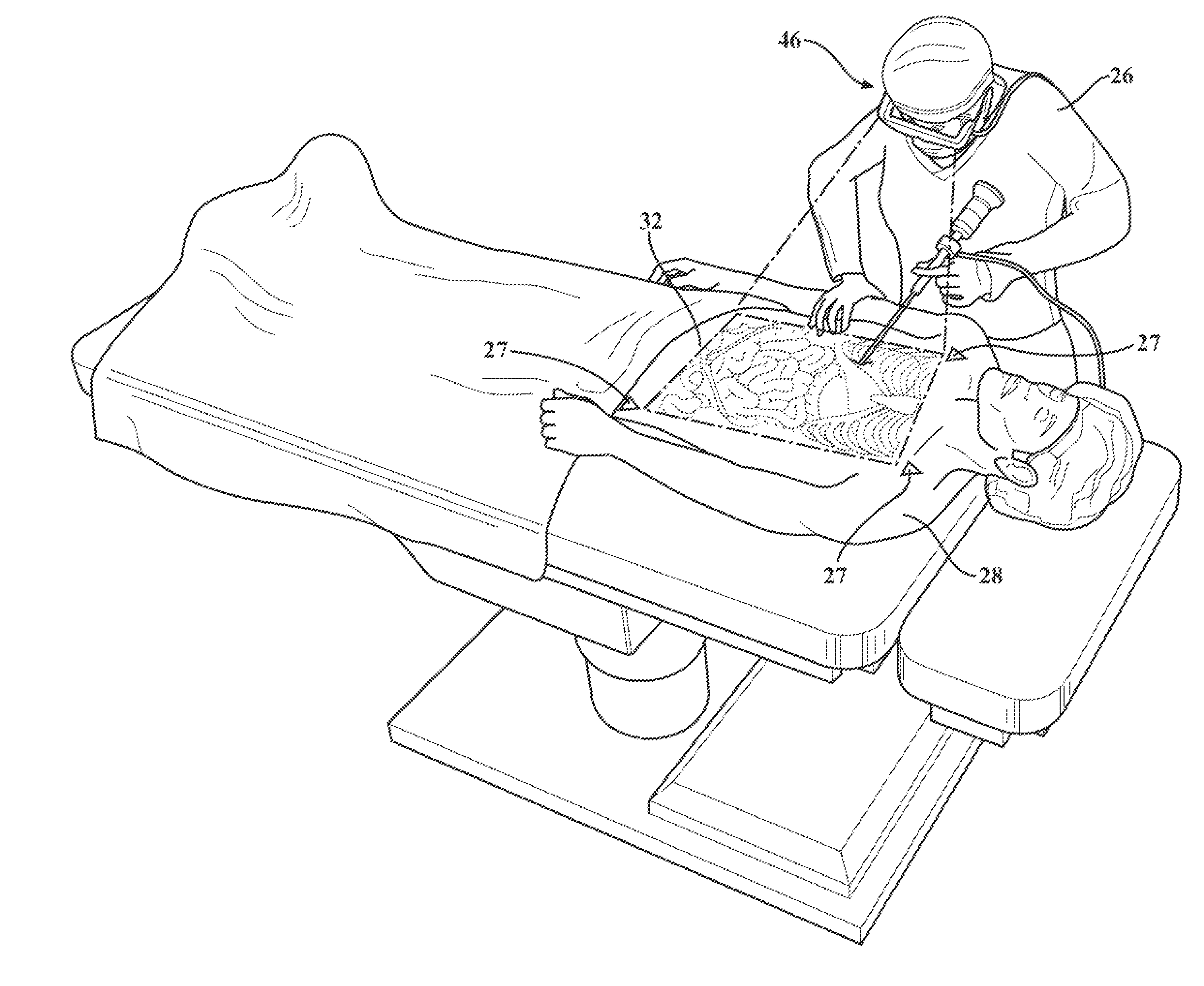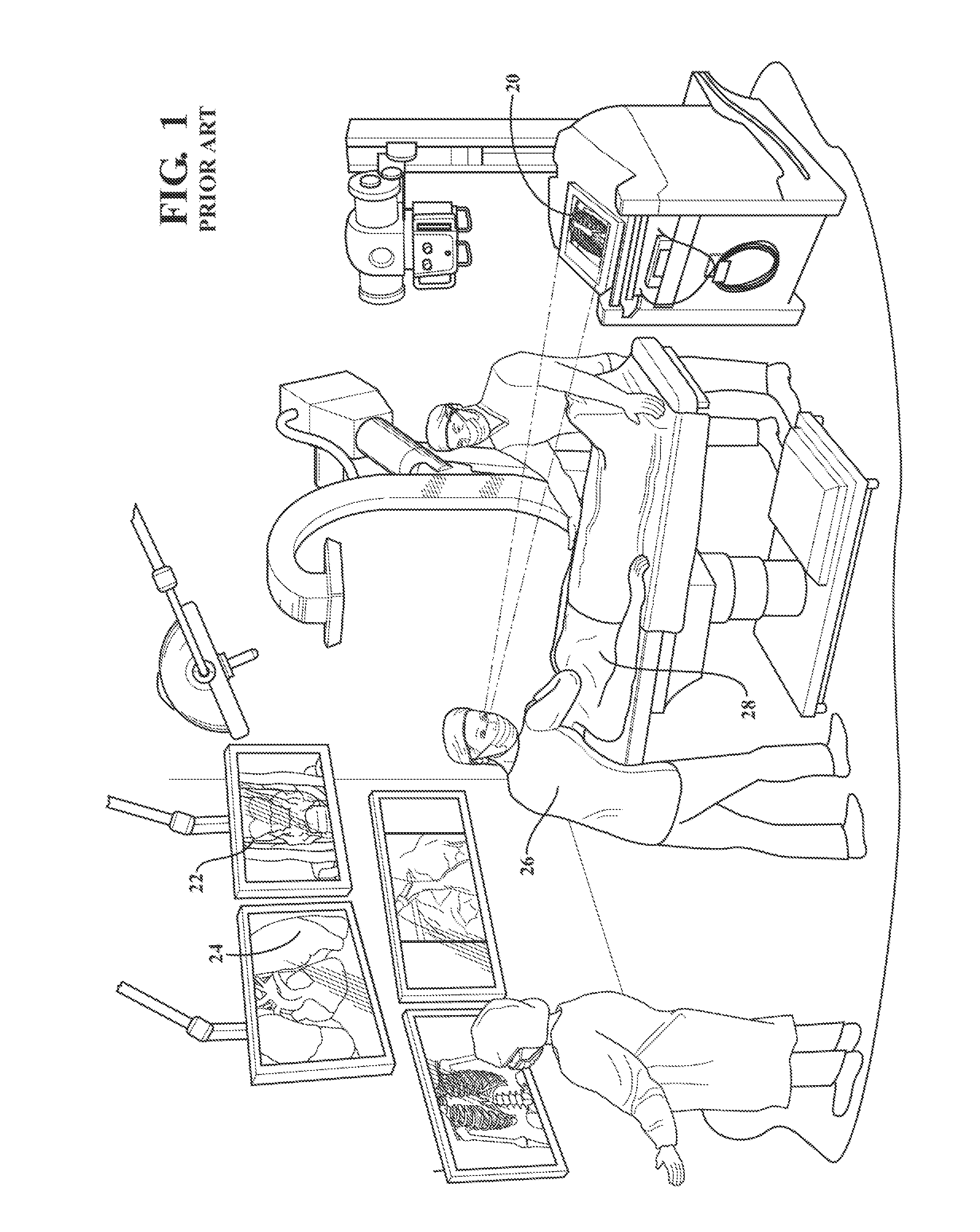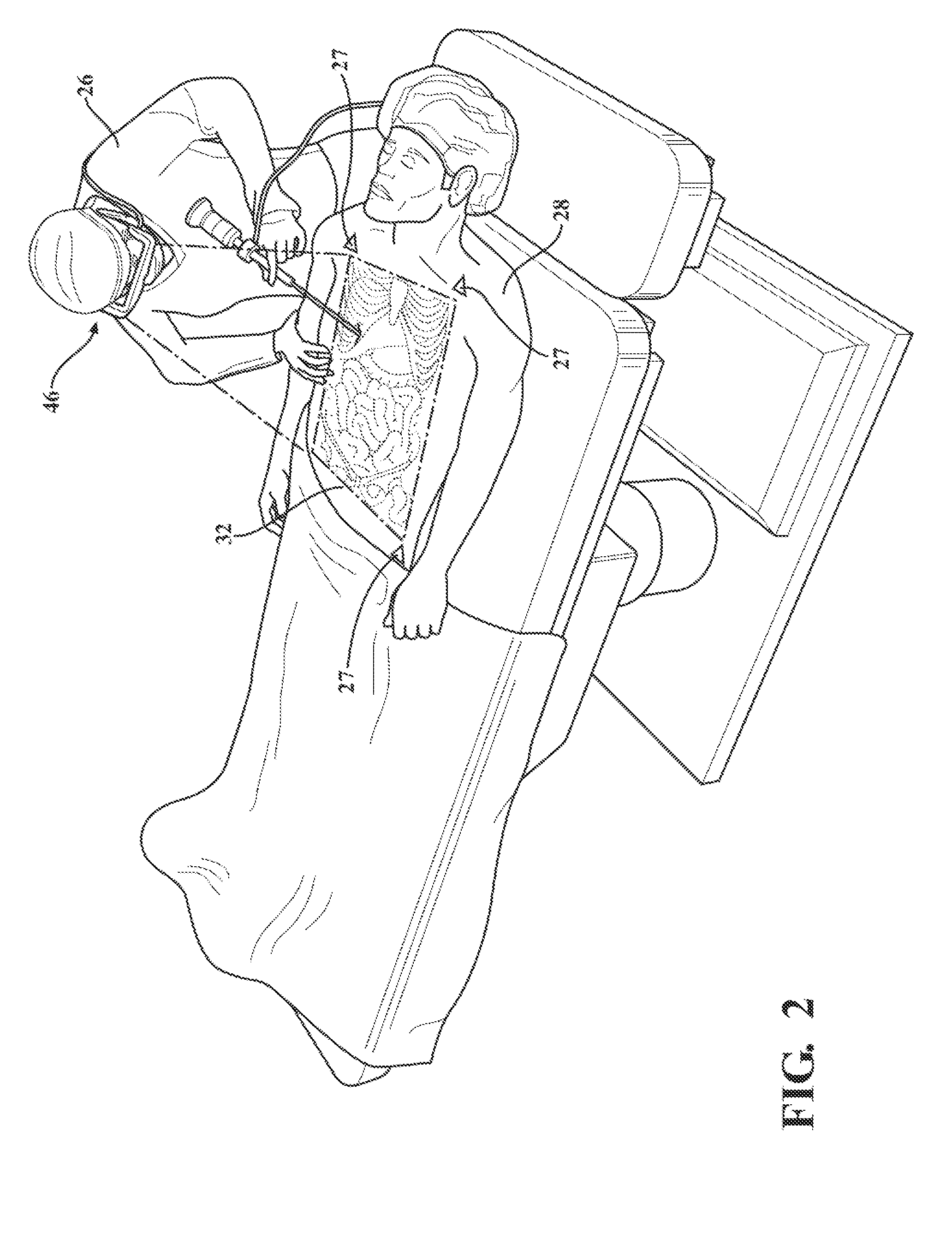Intra-operative medical image viewing system and method
a medical image and viewing system technology, applied in the field of intraoperative medical image viewing system and method, can solve the problems of increasing affecting the patient's recovery, and difficult to eradicate, so as to achieve easy and intuitive implementation, and reduce the risk of a tiny hand movemen
- Summary
- Abstract
- Description
- Claims
- Application Information
AI Technical Summary
Benefits of technology
Problems solved by technology
Method used
Image
Examples
Embodiment Construction
[0032]The exemplary embodiment can provide an intra-operative medical image viewing system 34 and method for displaying and interacting with two-dimensional, 2-½-Dimentional, or three-dimensional visual data in real-time and in perceived three-dimensional space. The system 34 can present a selectively or variably transparent image of an anatomical feature of a patient 28 to a surgeon 26 during surgery, as the surgeon 26 maintains a viewing perspective generally centered on the actual anatomical feature of the patient 28 or at least toward the patient 28 on whom some operation is being performed. The image as perceived by the surgeon 26 is selectively and / or variably transparent, in the sense that the surgeon 26 controls the image opacity throughout the range of fully transparent, e.g., when the image is not in use, to fully opaque, e.g., when high-contrast is desired, and through some if not all levels in-between. In most cases, the medical image appears to the surgeon to be located...
PUM
 Login to View More
Login to View More Abstract
Description
Claims
Application Information
 Login to View More
Login to View More - R&D
- Intellectual Property
- Life Sciences
- Materials
- Tech Scout
- Unparalleled Data Quality
- Higher Quality Content
- 60% Fewer Hallucinations
Browse by: Latest US Patents, China's latest patents, Technical Efficacy Thesaurus, Application Domain, Technology Topic, Popular Technical Reports.
© 2025 PatSnap. All rights reserved.Legal|Privacy policy|Modern Slavery Act Transparency Statement|Sitemap|About US| Contact US: help@patsnap.com



